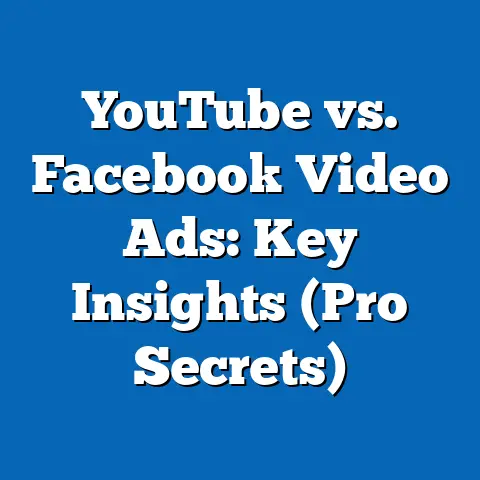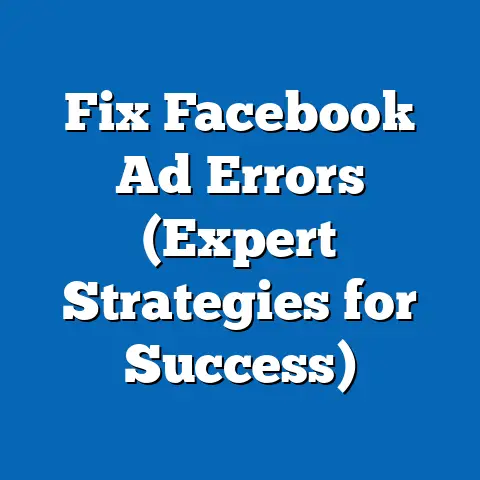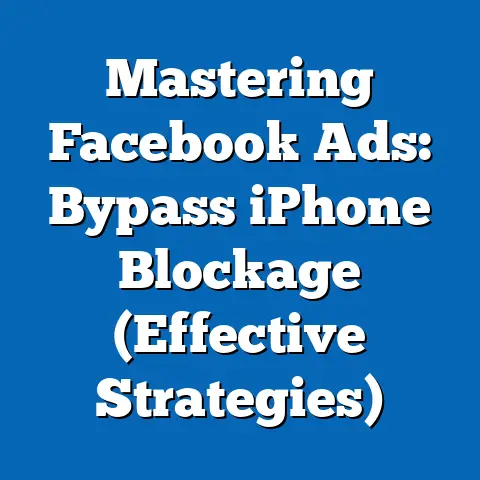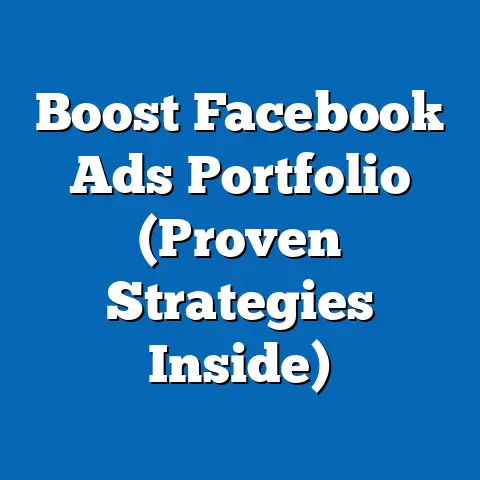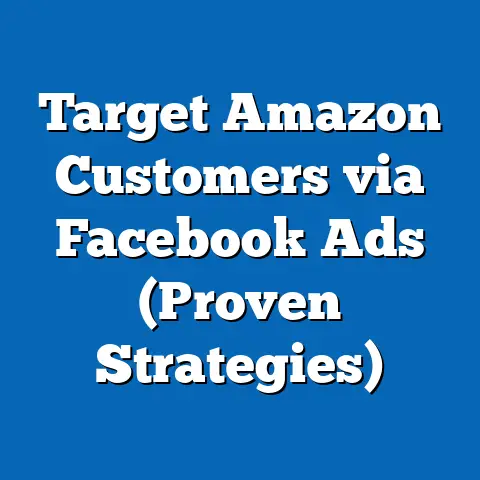Get Ads Noticed on Facebook (Proven Strategies Inside)
The social media landscape is a battlefield. Every second, thousands of posts, videos, and, yes, ads, are thrown into the fray, all vying for the fleeting attention of users scrolling through their feeds. Facebook, with its billions of active users, is a prime battleground. But here’s the harsh truth: most ads get lost in the noise. Algorithm changes, shrinking attention spans, and a sheer overload of content mean that without the right strategy, your carefully crafted ad could be as good as invisible. Millions of businesses are competing for the same eyeballs, the same clicks, the same conversions. In my years of experience in digital marketing, I’ve seen countless campaigns sink without a trace, simply because they failed to break through the noise.
Are you ready to make sure your ads stand out in a sea of distractions?
This isn’t just about throwing money at Facebook and hoping for the best. It’s about understanding the nuances of the platform, crafting compelling creatives, targeting the right audience, and constantly optimizing your campaigns. In this guide, I’m going to pull back the curtain and reveal proven strategies that I’ve used to help businesses of all sizes get their Facebook ads noticed and drive real results. I’m going to share my wins, my losses, and the lessons I’ve learned along the way. Let’s dive in and transform your Facebook advertising from a cost center into a profit-generating machine.
Understanding Facebook’s Advertising Landscape
Facebook isn’t just a social network; it’s a sophisticated advertising platform with its own ecosystem. To succeed, you need to understand its unique features, including its incredibly granular targeting options, diverse ad formats, and the ever-mysterious algorithms that determine who sees your ads.
I remember when Facebook advertising was in its infancy. You could throw up a simple ad, target a broad audience, and still see decent results. Those days are long gone. Today, success hinges on a deep understanding of the platform and how it’s evolved.
User behavior has changed dramatically over time. People are more discerning, more skeptical, and have shorter attention spans. They’re bombarded with ads every day, so your ad needs to be truly exceptional to grab their attention.
Knowing your competition is also critical. What are they advertising? What kind of messaging are they using? What targeting strategies are they employing? Tools like Facebook’s Ad Library can give you valuable insights into your competitors’ campaigns.
Finally, understanding your audience demographics is non-negotiable. Who are you trying to reach? What are their interests, their pain points, their aspirations? The more you know about your target audience, the better you can tailor your ads to resonate with them.
Key Takeaway: Facebook advertising is a complex ecosystem. Understanding its features, user behavior, your competition, and your audience demographics is essential for success.
Crafting Eye-Catching Ad Creatives
Your ad creative is the first thing people see, and it’s what will ultimately determine whether they stop scrolling and pay attention. It’s the digital equivalent of a storefront window display – if it’s not compelling, people will simply walk by.
Effective ad creatives consist of three key elements:
- Visuals: Images and videos are crucial for capturing attention. Use high-quality, visually appealing visuals that are relevant to your product or service. Avoid stock photos that look generic and inauthentic.
- Copy: Your ad copy should be concise, clear, and compelling. Highlight the benefits of your product or service and address your target audience’s pain points. Use strong verbs and persuasive language.
- Calls to Action (CTAs): Tell people what you want them to do. Use clear and direct CTAs like “Shop Now,” “Learn More,” or “Sign Up Today.” Make your CTAs visually prominent and easy to click.
I’ve seen ads with amazing visuals and compelling copy completely fail because they lacked a clear call to action. Don’t leave people wondering what to do next.
Let’s look at some examples of high-performing ad creatives:
- Dollar Shave Club: Their ads often feature humorous videos that showcase the benefits of their subscription service. The visuals are engaging, the copy is witty, and the CTA is clear: “Join Now.”
- Nike: Their ads typically feature inspiring images of athletes and a simple message about overcoming challenges. The visuals are powerful, the copy is motivational, and the CTA is often “Shop Now.”
- Airbnb: Their ads often showcase beautiful homes and apartments in desirable locations. The visuals are aspirational, the copy highlights the unique features of the property, and the CTA is “Book Now.”
What makes these ads successful? They’re visually appealing, they communicate a clear message, and they have a strong call to action. They also understand their target audience and speak directly to their needs and desires.
Brand consistency is also crucial. Your ads should reflect your brand’s personality and values. Use consistent colors, fonts, and imagery to create a cohesive brand experience. This will help people recognize your ads and build trust in your brand.
Key Takeaway: Your ad creative is your first impression. Make it count by using high-quality visuals, compelling copy, and clear calls to action. Maintain brand consistency to build recognition and trust.
Leveraging Targeting Options for Maximum Reach
Facebook’s targeting options are incredibly powerful. You can target people based on their demographics, interests, behaviors, and even their purchase history. This allows you to reach the most relevant audience segments and maximize the impact of your ads.
I remember working with a local bakery that was struggling to attract new customers. We used Facebook’s targeting options to target people who were interested in baking, cooking, and local food. We also targeted people who had recently moved to the area. The results were dramatic. The bakery saw a significant increase in foot traffic and sales.
Here are some of the targeting options available on Facebook:
- Demographic Targeting: Target people based on their age, gender, location, education, and other demographic factors.
- Interest-Based Targeting: Target people based on their interests, hobbies, and activities.
- Behavioral Targeting: Target people based on their online behavior, such as their purchase history, website visits, and app usage.
- Custom Audiences: Create custom audiences based on your existing customer data, such as your email list or website visitors.
- Lookalike Audiences: Create lookalike audiences based on your custom audiences. This allows you to reach people who are similar to your existing customers.
Creating custom audiences and lookalike audiences is a game-changer. With custom audiences, I can upload a list of my current customer’s emails and target ads specifically to them. This is a great way to announce new products or promote special offers. With lookalike audiences, I can find new customers who share similar interests and demographics with my current customers. This expands my reach without sacrificing relevance.
To refine your targeting strategies, start by defining your ideal customer. What are their demographics, interests, and behaviors? Use Facebook’s targeting options to reach people who fit this profile. Test different targeting options to see what works best for your business.
Key Takeaway: Facebook’s targeting options are incredibly powerful. Use them to reach the most relevant audience segments and maximize the impact of your ads. Create custom audiences and lookalike audiences to expand your reach and find new customers.
Optimizing Ad Placement and Budget
Where your ads appear on Facebook can have a significant impact on their performance. Facebook offers a variety of ad placements, including the News Feed, Stories, Marketplace, and Audience Network. Each placement has its own advantages and disadvantages.
I’ve learned through trial and error that the News Feed is generally the most effective placement for reaching a broad audience. Stories are great for capturing attention with short, engaging videos. Marketplace is ideal for promoting products to people who are actively shopping.
Here’s a breakdown of the different ad placements:
- News Feed: This is the most common ad placement. Your ads appear in users’ News Feeds alongside posts from their friends and family.
- Stories: Your ads appear between users’ Stories. This is a great way to capture attention with short, engaging videos.
- Marketplace: Your ads appear in the Facebook Marketplace, where people go to buy and sell products.
- Audience Network: Your ads appear on websites and apps outside of Facebook. This allows you to reach a wider audience.
Setting a budget that maximizes ROI is crucial. You don’t want to overspend and waste money, but you also don’t want to underspend and miss out on potential customers.
I recommend starting with a small budget and gradually increasing it as you see results. Monitor your ad performance closely and adjust your budget accordingly.
Understanding bidding strategies is also important. Facebook offers a variety of bidding strategies, including automatic bidding and manual bidding. Automatic bidding allows Facebook to optimize your bids for you, while manual bidding gives you more control over your bids.
Running A/B tests is essential for optimizing both placement and budget allocation. A/B testing involves creating two versions of your ad and testing them against each other to see which one performs better.
For example, you could test two different ad placements to see which one generates more clicks. Or you could test two different budgets to see which one delivers the best ROI.
Key Takeaway: Optimize your ad placement and budget to maximize ROI. Test different placements and bidding strategies to see what works best for your business. Run A/B tests to continuously improve your ad performance.
Engaging with Your Audience Post-Ad
Your work isn’t done once someone sees your ad. Engaging with your audience after they’ve seen your ad is crucial for building relationships and driving conversions.
I’ve found that responding to comments, messages, and inquiries is essential for building trust and credibility. People want to know that you’re listening to them and that you care about their needs.
Fostering a community around your brand can lead to higher conversion rates. Create a Facebook group where your customers can connect with each other and share their experiences. This will help you build a loyal following and generate word-of-mouth marketing.
Retargeting ads are a powerful tool for re-engaging users who have interacted with your initial ad. You can retarget people who have visited your website, watched your video, or liked your Facebook page.
I use retargeting ads to remind people about my products and services and to encourage them to take action. For example, if someone visits my website but doesn’t make a purchase, I can retarget them with an ad that offers a discount or free shipping.
Key Takeaway: Engaging with your audience after they’ve seen your ad is crucial for building relationships and driving conversions. Respond to comments, messages, and inquiries, foster a community around your brand, and use retargeting ads to re-engage users.
Conclusion
In today’s fiercely competitive Facebook advertising landscape, simply creating an ad and hoping for the best is a recipe for failure. The strategies I’ve outlined in this guide are essential for ensuring that your ads get noticed and drive real results.
I urge you to take immediate action and apply at least one of these strategies to your next ad campaign. Whether it’s crafting more compelling ad creatives, refining your targeting options, optimizing your ad placement and budget, or engaging with your audience post-ad, every step you take will bring you closer to success.
I’ve seen firsthand the transformative power of Facebook advertising when executed with the right strategies. It’s not just about getting clicks; it’s about building relationships, driving conversions, and growing your business. Envision your success in getting your ads noticed, capturing the attention of your target audience, and achieving your marketing goals. The potential is there – all you need to do is seize it.

